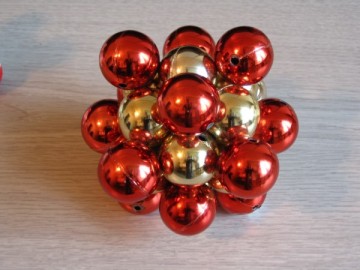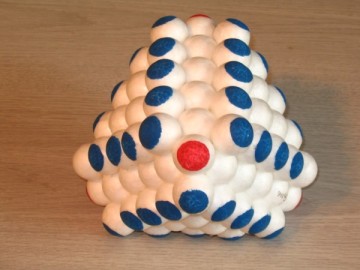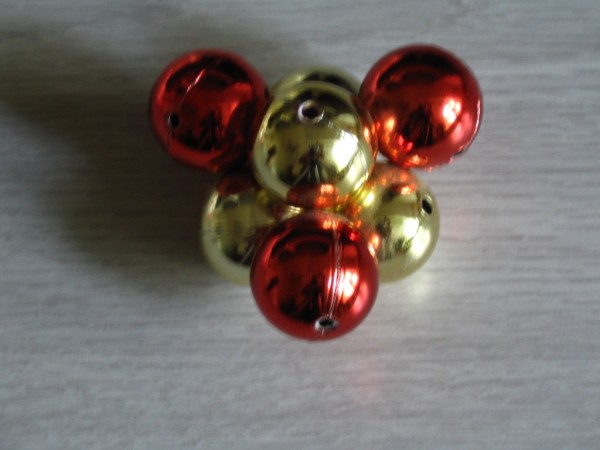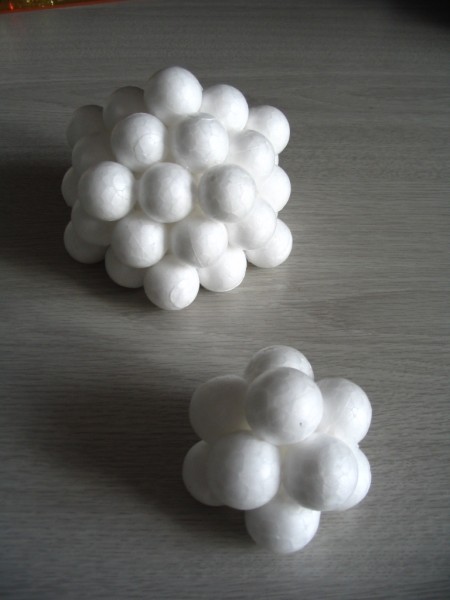COMPARISON OF THE LATTICE NESTED HYDRENO
AND BOHR-RUTHERFORD ATOMIC MODELS
AND BOHR-RUTHERFORD ATOMIC MODELS
.jpg)

Aluminum Nucleus
B2 Cuboctacore
B2 Cuboctacore
Diamond
.jpg)


Lithium 7 Nucleus
Arsenic Nucleus
Tin 116
(white)
(white)
| Property Or Phenomenon Logically Explained | Hydreno Model | Bohr- Rutherford |
| Concerning Positrons & Negatrons | ||
| Positron / Electron (Negatron) Structure | Yes | No |
| Particle Genesis | Y | N |
| Electrostatic Attraction & Repulsion | Y | Y? |
| Charge Definition | Y | N |
| Non-Radiating Orbital Electrons | Y | N |
| Ellipsoid Electron Orbitals | Y | N |
| Electron / Positron Annihilation | Y | Y? |
| Electron / Positron Pair Production | Y | N |
| Particle Mass | Y | N |
| Spin Quanta | Y | Y? |
| Concerning Nucleons | ||
| Proton Structure and Genesis | Y | N |
| Neutron Structure and Genesis | Y | N |
| Heavy Electrons (Muon & Tau) | Y | N |
| Nucleon Internal Bonding & Stability | Y | N |
| Nucleon Mass Defect | Y | N |
| Nucleon Evaporation | Y | N |
| Spin Quanta | Y | N |
| Concerning The Nucleus | ||
| Nuclear Structure and Genesis | Y | Y? |
| Nucleon Bonding (Strong Force) | Y | N |
| Void of Nuclear Stability (Bi83 to Th90) | Y | N |
| Limit of Nuclear Stability | Y | N |
| Range of Stable Isotopes | Y | N |
| Isotopic Abundance | Y | N |
| Missing Isotopes | Y | N |
| Missing Elements (Tc, Pr, etc.) | Y | N |
| Super Heavy Elements | Y | N |
| Spin Quanta | Y | Y? |
| Concerning Nuclear Reactions | ||
| Thermonuclear Fission | Y | Y? |
| Thermonuclear Fusion | Y | Y? |
| Cold Fission | Y | N |
| Cold Fusion (Low energy induced) | Y | N |
| Chemo-Nuclear Reactions | Y | N |
| Bio-Nuclear Reactions | Y | N |
| Mass Defect | Y | Y? |
| Alpha, Beta, Gamma & Neutron Radiations | Y | Y? |
| Concerning The Atom | ||
| Atomic Structure and Genesis | Y | Y? |
| Allotropes | Y | N |
| Bond Angles | Y | N |
| Atomic Orbits and Orbitals | Y | Y? |
| Isomers | Y | Y? |
| Electron Affinity, Electronegativity | Y | N |
| Inert Elements | Y | Y? |
| Quantization of Atomic Orbitals | Y | Y |
| Valence States and Alterations | Y | N |
| Concerning Atomic Bonding | ||
| Atomic (Electron) Bonding Mechanism | Y | Y? |
| Covalent Bonds | Y | Y? |
| Ionic Bonds | Y | Y? |
| Hydrogen Bonds | Y | Y? |
| Diatomic / Multiatomic Elements | Y | N |
| Bonding Alignment / Orientation | Y | Y? |
| Catalyst behaviour | Y | N |
| Volatility | Y | Y? |
| Concerning Bulk Matter | ||
| Structure and Genesis | Y | N |
| Bulk Volume, Rigidity and Solidity | Y | Y? |
| Crystal Structure and Organization of Elemental Solids | Y | N |
| Fluid Properties (Viscosity, Surface tension, Brownian motion, etc.) | Y | N |
| Mechanical Properties (strength, stiffness, elasticity, strain, etc.) | Y | N |
| Intrinsic Properties (conductivity, enthalpy, resistance, etc.) | Y | Y? |
| Gravitational and Inertial Forces | Y | N |

Neutron Icosacores
© 2006, 2007
Mark Porringa
Mark Porringa
Site Map Link
(Updated Mar 05/07)
(Updated Mar 05/07)

Proton
Structure
Structure